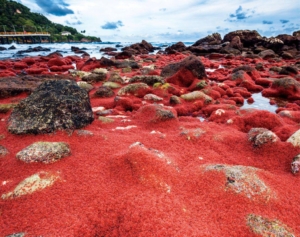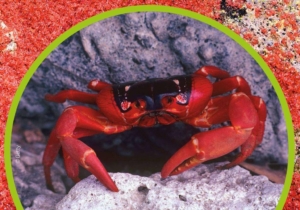Christmas Island is a remote Australian territory located in the Indian Ocean, approximately 2,600 kilometers (1,600 miles) northwest of Perth. It is part of the wider group of islands known as the Indian Ocean Territories, which also includes the Cocos (Keeling) Islands.
Thank you for reading this post, don't forget to subscribe!The island was named Christmas Island by Captain William Mynors, an English navigator, who arrived there on Christmas Day in 1643. The island has a unique ecosystem with diverse flora and fauna, including the famous annual red crab migration, where millions of red crabs move from the forest to the ocean to breed.
Christmas Island has a population of around 1,500 people and its main settlement is called Flying Fish Cove. The economy of the island is primarily driven by phosphate mining, which has been a major industry since the late 19th century. In recent years, tourism has also become an important sector due to the island’s natural beauty and unique wildlife.
The island is known for its stunning beaches, clear turquoise waters, and abundant marine life, making it a popular destination for diving and snorkeling. Visitors can explore the island’s rainforests, limestone caves, and enjoy various outdoor activities such as hiking and birdwatching.
It’s worth noting that Christmas Island has also been in the news due to the Australian government’s controversial policy of detaining asylum seekers there in offshore immigration facilities. This policy has received significant international attention and scrutiny.

Certainly! Here is some additional information about Christmas Island:
1. Geography: Christmas Island is a small island with a total land area of about 135 square kilometers (52 square miles). The island is of volcanic origin and is dominated by a central plateau, reaching its highest point at Murray Hill, which stands at 361 meters (1,184 feet) above sea level.
2. Climate: Christmas Island has a tropical equatorial climate with high humidity and consistent temperatures throughout the year. The average temperature ranges from 24 to 30 degrees Celsius (75 to 86 degrees Fahrenheit). The island experiences two distinct seasons: the wet season (November to April) and the dry season (May to October).
3. Flora and Fauna: Christmas Island is renowned for its rich biodiversity. Its rainforests are home to unique species found nowhere else on Earth. The island is particularly known for its land crabs, including the famous red crabs that undertake a massive migration each year. The island is also a significant nesting site for seabirds, and it hosts numerous species of plants, insects, and reptiles.
4. National Park: Christmas Island National Park covers a substantial portion of the island, encompassing diverse ecosystems, including rainforests, wetlands, and coastal areas. The park provides habitat for many endemic and endangered species. Visitors can explore the park through a network of walking trails and discover its natural wonders.
5. Cultural Diversity: Christmas Island is home to a diverse community with a mix of ethnicities, including Chinese, Malay, and European heritage. This cultural diversity is reflected in the island’s festivals and celebrations, which encompass Chinese New Year, Hari Raya Aidilfitri, and Christmas.
6. Conservation Efforts: The unique ecosystems of Christmas Island are carefully protected and managed. Efforts are made to control introduced species that can harm the island’s native flora and fauna. The island has been recognized as a World Heritage Site for its outstanding natural values.
7. Communication and Connectivity: Christmas Island has modern amenities and infrastructure, including internet access, mobile phone coverage, and basic services. The island has an airport with regular flights to and from mainland Australia.
8. Fishing and Recreation: Fishing is a popular activity on Christmas Island, with opportunities for both recreational and sport fishing. The surrounding waters are teeming with marine life, including a variety of fish species and coral reefs, making it an attractive destination for fishing enthusiasts and divers.



